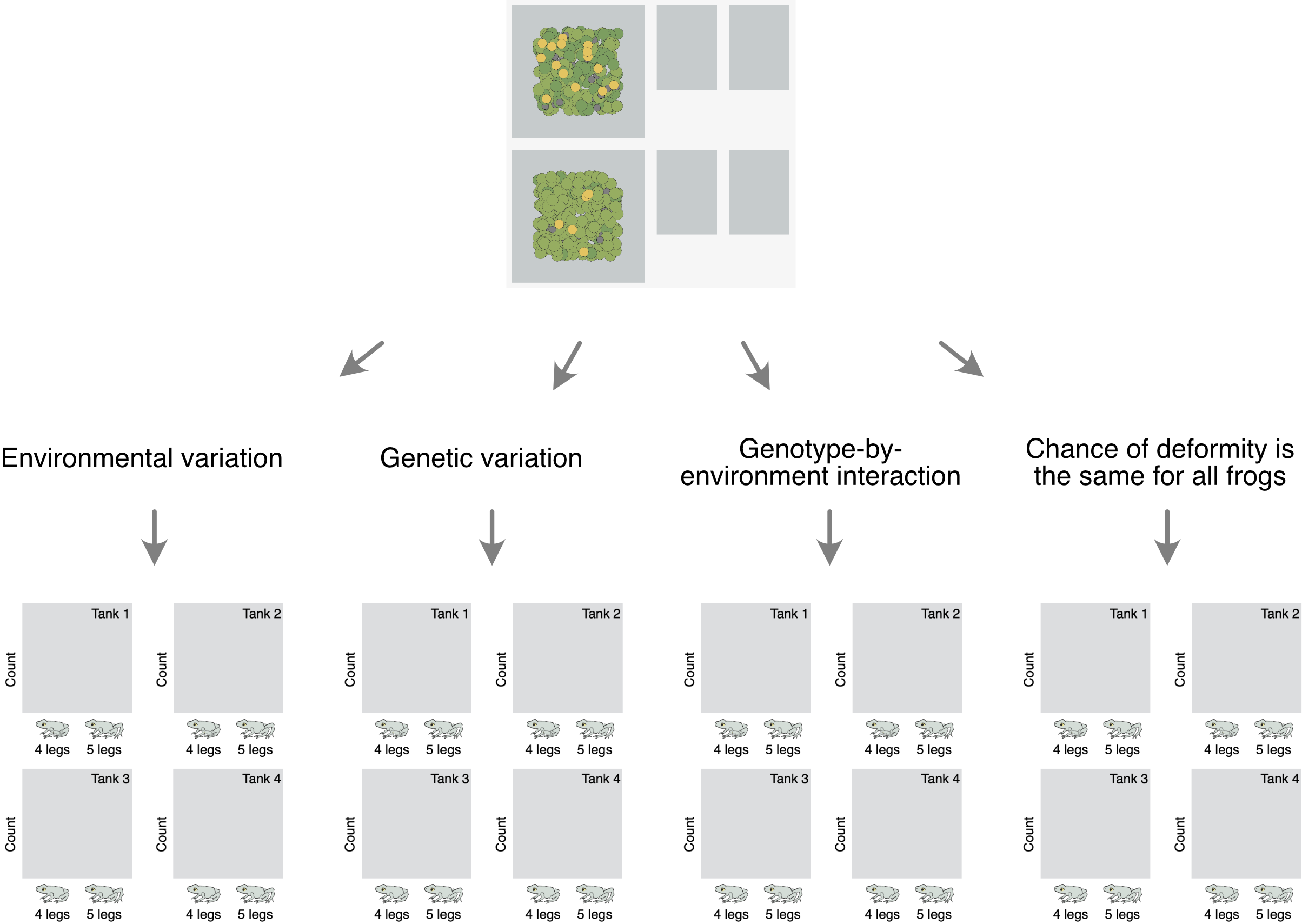8 Apogee
The cause of deformity—of variation in number of legs—is different in each of the four scenarios. My hope is that you will conduct studies that will allow you to infer with confidence what’s going on in all of them—including Scenario Four, which is a little more complicated than the other three.
Match each scenario with the cause of variation in number of legs:
Scenario Kind of Variation One ___ A. Environmental variation Two ___ B. Genetic variation Three ___ C. Genotype-by-environment interaction Four ____ D. Chance
Here is the most ambitious challenge you can take on with FrogPond. There is at least one design for an experimental study that will give a different result under all four scenarios.

In other words, this experimental design simultaneously tests all possible hypotheses—that deformity is caused by parasites, that deformity is caused by a genetic mutation, and that deformity is caused by parasitic infection in genetically susceptible individuals, and that all frogs have the same chance of growing a fifth leg.
See if you can discover this experimental design and explain why it works the way it does. Here is a hint: The experiment I have in mind uses frogs from both ponds and all four tanks, and takes advantage of the fact that there is a higher rate of deformity in one pond than in the other.
- Describe an experiment that will produce a different outcome under each of four possible hypotheses. Sketch the results you’ll get for each and explain your reasoning.